Turning a person with an interest in what you do into a paying customer is a straightforward process if carried out carefully and with diligence. The process is known as a sales pipeline, and there are several sales pipeline stages to go through to get the final agreement of a sale.
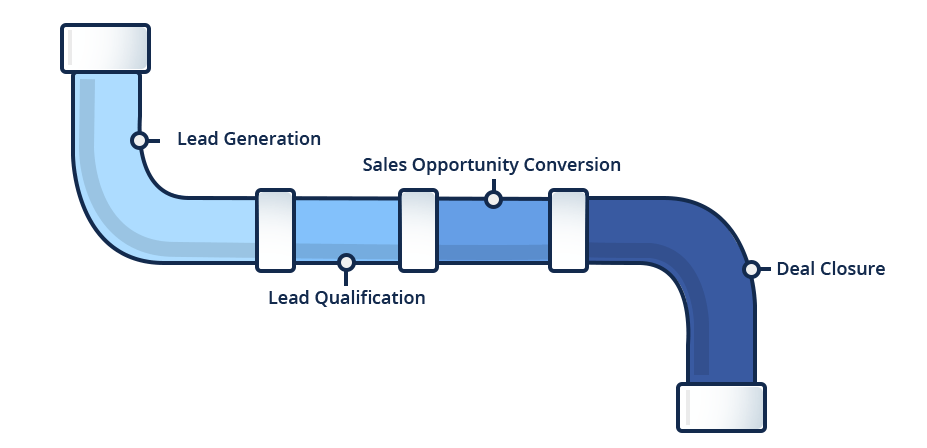
These stages are predetermined and simple to follow but will need careful management if a large number of customers are in the pipeline.
Here are the sales pipeline stages and what you need to do in each of them to move on to the next step.
Getting Leads – Lead Generation
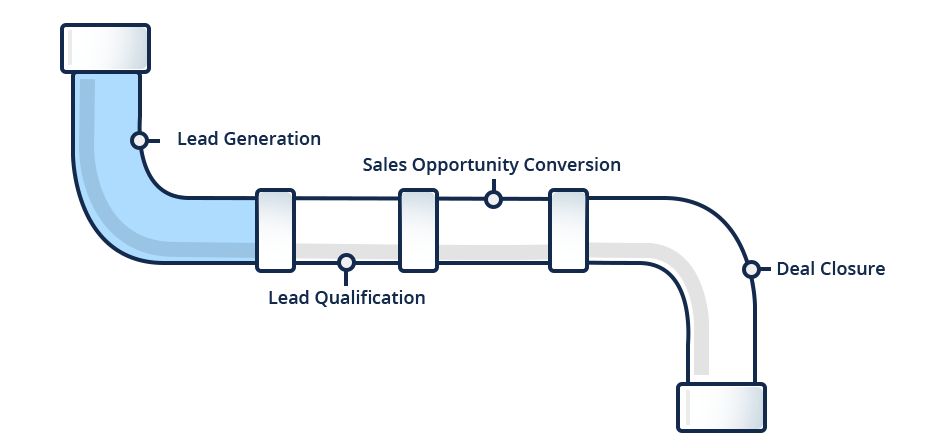 One of the hardest parts of the sales pipeline process is the generation of leads. It can be complex and time-consuming, but it is also the foundation on which the whole process is built.
One of the hardest parts of the sales pipeline process is the generation of leads. It can be complex and time-consuming, but it is also the foundation on which the whole process is built.
There are many ways of generating leads including online advertising, real-world advertising, handing out leaflets and flyers, email campaigns, telephone campaigns, and so on.
The goal is to gain contact with someone who may be interested in what you have to sell – at this stage they don’t need to be ready to buy, they only need to be a potential customer.
As time goes by, advertising campaigns can seep into the public consciousness, even at a local level, and awareness of your brand is built up.
This means that in due time, leads will contact you rather than the other way around, making this step a whole lot easier.
Qualifying Leads
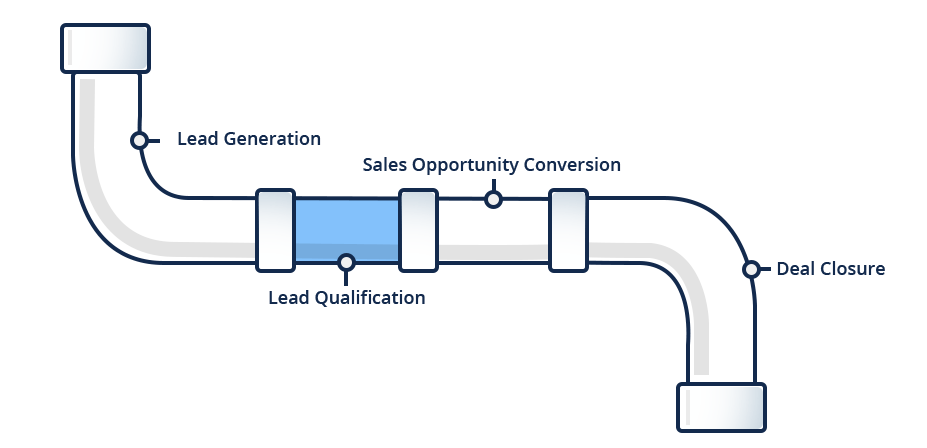 Once a lead has been discovered, it is time to qualify them. In a sales funnel, you would look to find people who need your services, are willing to pay for it, and are ready to get on with it soon. In a sales pipeline, it doesn’t work in quite the same way.
Once a lead has been discovered, it is time to qualify them. In a sales funnel, you would look to find people who need your services, are willing to pay for it, and are ready to get on with it soon. In a sales pipeline, it doesn’t work in quite the same way.
Through your lead generation, you’ve already found someone who is interested in your services – this is similar to discovering those who need your services. Although the goal is not to eliminate people from the sales pipeline, you must discover those who are not only willing to pay for the service but are also capable of paying for it.
A lead with a strong interest but no way of paying is a dead end. A lead with the means to pay but who is currently unconvinced is a much safer bet.
Leads who are not ready to start just yet are also fine – the next part of the process will deal with all of this.
All you need to do to qualify the lead are to make sure they can pay, are in an area you cover, and make sure they are actually interested.
Turning it into a Sales Opportunity
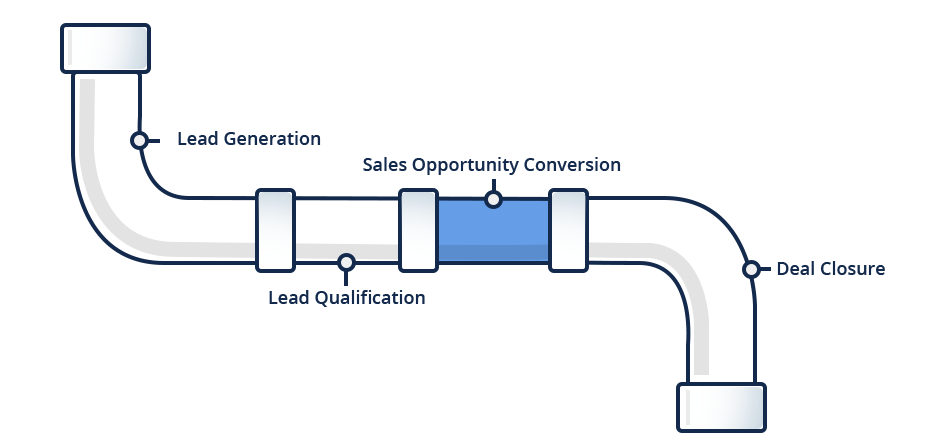 To turn your qualified lead into a sales opportunity, you need to focus on the benefits your service will provide to the potential customers.
To turn your qualified lead into a sales opportunity, you need to focus on the benefits your service will provide to the potential customers.
By explaining these benefits in detail, you will be able to turn their interest into a desire to have the service provided. If they thought it was a good idea to start with, they will now know everything the service can do for them, and thereby will be more prepared to buy.
If your lead was already very interested but was not quite ready to get started, the rundown of the benefits in this stage of the sales pipeline should help to move them along.
A good buyer is fully informed, knows what they want, knows what they will get, and is ready to buy if the price is right.
Closing the Deal
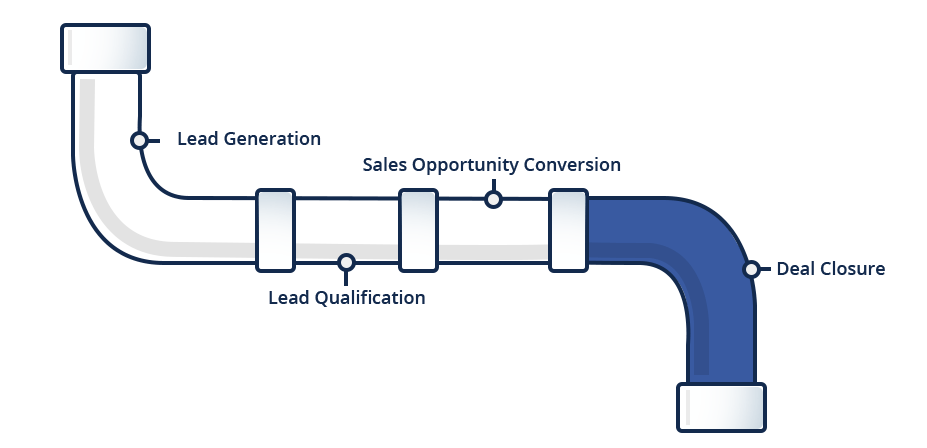 When you have gone through all the sales pipeline stages and reach the point of closing the deal, you’ve done almost everything you can. Negotiating the exact terms and price to pay should not be too much of a sticking point.
When you have gone through all the sales pipeline stages and reach the point of closing the deal, you’ve done almost everything you can. Negotiating the exact terms and price to pay should not be too much of a sticking point.
If you try and close the deal too soon, the buyer won’t be fully aware of the benefits they will receive, and the price may become a big factor. If they know what they are getting into, the pricing structure will be less of a barrier – it may still require a little negotiation, but far less than with an uninformed lead.
When the price and the terms are finally agreed, the deal is closed, and the service is ready to be provided.
Keeping the Pipeline Flowing
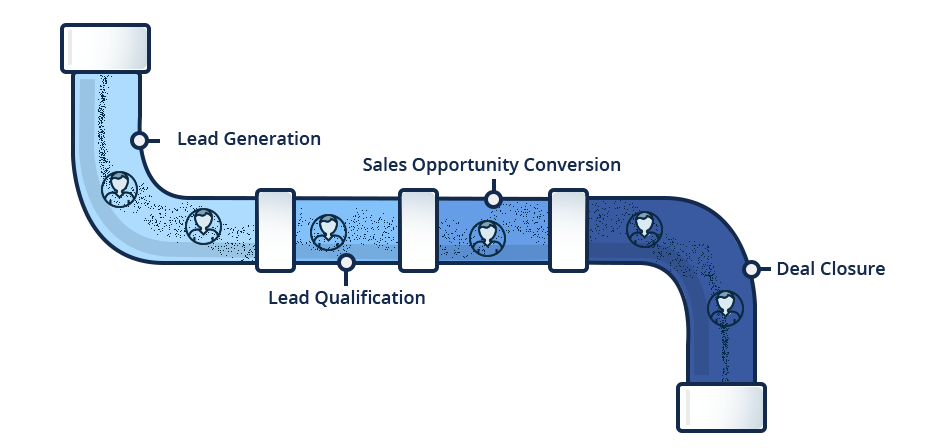 A good sales pipeline always has more than a single customer progressing through it. Knowing everything you can about your leads is important, so records should be kept allowing you to know how far each lead has progressed through the stages, and to keep track of what their concerns and requirements are. If you have promised to follow them up (and you should), you will need to know when to call and what you need to say.
A good sales pipeline always has more than a single customer progressing through it. Knowing everything you can about your leads is important, so records should be kept allowing you to know how far each lead has progressed through the stages, and to keep track of what their concerns and requirements are. If you have promised to follow them up (and you should), you will need to know when to call and what you need to say.
Multiple customers require multiple records, and so a good system is required, be it paper, online, or some kind of CRM database.
Keep as many leads as you can
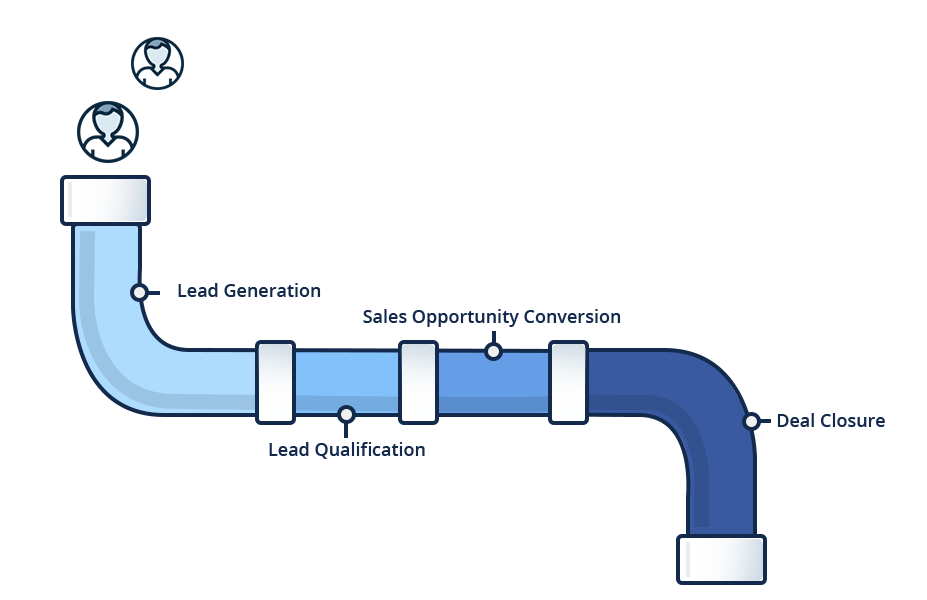
A sales pipeline is designed to take interested parties and turn them into paying customers, while a sales funnel is designed to filter out all the people who aren’t ready to go right now. It’s important to recognize the difference, as it can be tempting to forget about some leads if you aren’t making progress – however, it can be a lot harder to generate a new lead to replace them rather than putting the work in to close the deal.
You may even find that previous customers return and need to go through the sales pipeline again.
Of course, not every lead will turn into a paying customer, no matter how hard you try. However, you must follow the process, step by step, in order for it to be successful.
Skipping a step won’t work – imagine baking a cake by mixing all the ingredients together and then serving it on a plate. The baking process was skipped entirely, and so you are left with an unappetizing mess – this is the exact reason it is important to work through every one of the sales pipeline stages.
You want new paying customers, not an unappetizing mess!
FAQs
The optimal number varies. Here’s why:
1. Business and complexity: The ideal number of stages depends on your specific business and the complexity of your sales cycle. A simpler B2C sale might have fewer stages than a complex B2B enterprise sale.
2. Focus on clarity: While having enough stages to track progress is important, avoid creating too many stages that become cumbersome and hinder clear visualization of your pipeline.
3. Customize for your needs: The stages listed in the blog post can be a starting point. Don’t be afraid to customize them to reflect your specific sales process and terminology.
Timeframes are flexible. Here’s how to approach it:
1. Average sales cycle: Analyze your historical data to understand the average time deals typically spend in each stage of your sales cycle. This provides a baseline for setting timeframes.
2. Stage-specific considerations: Certain stages, like qualification or negotiation, might naturally take longer than others. Set realistic timeframes based on the activities involved in each stage.
3. Regular pipeline review: Monitor your pipeline regularly and identify deals that have stalled in a particular stage for too long. This might indicate the need to adjust timeframes, address objections, or move the deal forward.
Consistency is key. Here are some strategies:
1. Clear stage definitions: Clearly define the criteria for each stage of your pipeline. This ensures everyone on the sales team has a shared understanding of when a deal can progress to the next stage.
2. Sales methodology training: Train your sales team on your chosen sales methodology and how it aligns with the stages in your pipeline.
3. Regular pipeline reviews: Conduct regular pipeline reviews with your sales team to discuss deal progression, identify potential roadblocks, and ensure everyone is applying the same criteria when moving deals through the pipeline.








